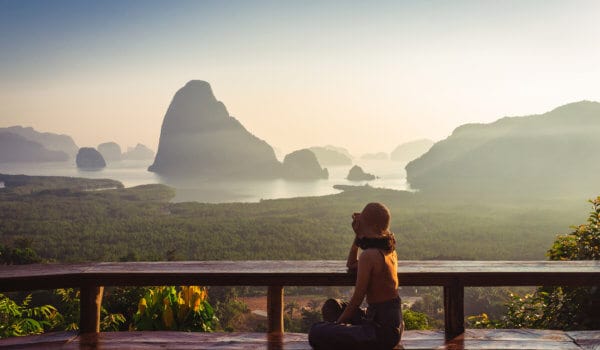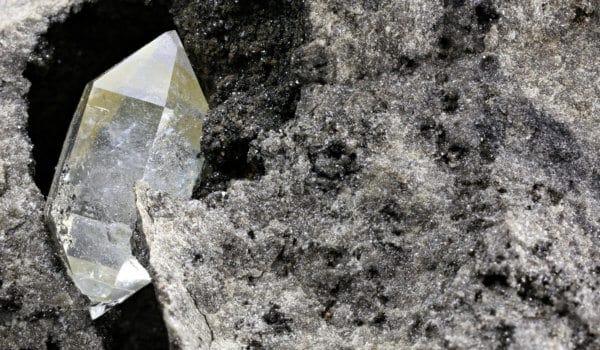Now that we have seen the most interesting places in Serbia, our budget adventure in the Balkans moves on to Bosnia. We begin by buying a ticket in the Serbian town of Uzice and taking a train to Sarajevo, the capital of Bosnia, the most ethnically mixed country in the Balkans. The ticket will cost around 10 EUR, and the trip will last 6h with a transfer in Banja Luka to Sarajevo.
Bosnia is very multiethnic as its population is composed of mostly of Bosnian Muslims, then Bosnian Serbs and Bosnian Croats. All of them are Slavs, but with different religions. Bosnia, more than any other country in the Balkans, has preserved its Turkish heritage. Unfortunately, a bloody war brought large scale destruction and tragic loss of life between 1992 and 1995, but today Bosnia is on its way to peace and stability.
Stop1: Sarajevo, Bosnia
General information: Sarajevo is the little Istanbul of the Balkans in terms of architecture, culture, and of course cuisine. It has a population of around 350 000 people and is remembered for hosting the Winter Olympics in 1984, when it was still part of Yugoslavia.
What to visit?
Old Town: The central attraction here is Bascarsija, or the Central Bazaar in Turkish. Bascarsija is Sarajevo’s main tourist attraction and is also the place where locals gather. This part of Sarajevo is always crowded with people. It is the core of the old town and Sarajevo’s main marketplace, surrounded by narrow streets and alleys. The Bascarsija dates from the XV century, when Isa Beg (Turkish lord) founded the town. There are many souvenir shops that sell oriental pottery, chaplets, Turkish coffee sets, water pipes, and carpets, just like similar markets in Turkey or the Middle East. You can have very cheap coffee for less than one euro in a traditional dzezva (like in Serbia) together with ratluk (a Turkish delight made from flour, sugar, and flavor of rosewater). You can see many fountains built in Turkish style, and many mosques, among them the oldest and most famous, which is the Emperor’s Mosque (dating from the XV century). Also in the city you can find Orthodox Churches, the Catholic Cathedral, and a Synagogue. Because of its rich religious diversity, Sarajevo is popularly called the European Jerusalem. Bosnia’s National Museum and National Theatre and Sarajevo’s city hall are also notable attractions here.
Bijela Tabija (White Fort) on Trebevic Mountain: The White Fort dates from the XV century, when it was built to defend Sarajevo. Superbly sited on a promontory 667m above sea level, Bijela Tabija overlooks Sarajevo and offers splendid views of the city. The walls are punctuated with ancient cannon ports, and visitors can explore grenade storage vaults. Today Bijela Tabija is a popular place to go for a walk beyond the city. It is very reachable from the center of Sarajevo as it takes only 30minutes to get there on foot. If you like hiking, you can continue to the top of Trebevic Mountain (1600m above sea level). From the peak you can see the whole city of Sarajevo and enjoy an amazing view over houses, dozens of minarets, and the Miljacka River.
Time for a meal: Like almost everything else in Bosnia, cuisine is also very influenced by Turkish culture. Must-try dishes in Sarajevo are Cevapi (originating with the word Kebab) – which can also be found in Serbia, Bulgaria, and Montenegro but are most famous here in Sarajevo. Cevapi are rolls of minced meat that are grilled. They are put in somun (a type of local bread) with onion and kajmak (a special type of sour cream). Cevapi are among my favorite Balkan dishes. In Sarajevo, a serving won’t cost more than 3-4 EUR. For desert you can have baklava (a cake originating in the Middle East, which can be found in other Balkan countries, too) that is very tasty and can cost between 1-2 EUR. If you visit Sarajevo in the wintertime, tursija is a must-try combination of pickled vegetables. It doesn’t cost more than a few euros.
Hanging out at night: Nightlife is quite interesting in Sarajevo. You can go to beerhouses such as Sarajevska Pivara and drink cheap local beer for a bit more than one euro. Another option are the shisha houses, where you can smoke a water pipe and have a beer or a coffee, and enjoy the oriental atmosphere in rooms decorated with lamps while listening to Turkish or Arabic music and watching belly dancers. Water pipes can cost around 4-5 EUR, and there is a large choice of aromatic tobaccos. The most famous shisha bar in Sarajevo is Baghdad.
TIP: On the way from Sarajevo to Mostar you can get off briefly at Visegrad and take the next train. Visegrad is a small town with a large XVI century bridge which has many arches and is one of the most important masterpieces of Turkish architecture in the Balkans. It was built by Mehmed Pasha Sokolovic, an Ottoman vizier of Serbian origin. The Yugoslav writer Ivo Andric published a historical novel centered on Visegrad and its bridge, including events that occurred on the bridge and in the life of Visegrad town between the early years of Ottoman rule and the end of WWI. The book is called “The Bridge on the Drina” and has been translated into many languages. Ivo Andrić won the Nobel Prize for literature in 1960.
Stop2 Mostar: An old city of new hopes
Short history: Mostar, the largest city in southern Herzegovina (population 100 000) is another example of the Turkish influence in Bosnia, but in distinctive ways. Located on the Neretva River, Mostar always had an important purpose as its citizens protected the city bridge in order to safeguard passage for military convoys and trade caravans.
How to get there? There is a direct train from Sarajevo. Tickets cost 5euros, and the trip lasts 3h and passes through very beautiful areas of untouched mountains and along clear, blue rivers.
What to see?
Old Bridge and Old Town: The bridge, the most famous monument in the city, was built in the XVI century and is one of most remarkable examples of Islamic architecture in the Balkans. In the ‘90s, during the Bosnian war, the Croatians destroyed the bridge, which symbolically separated the Muslim and non-Muslim quarters of the city. In 2004, the bridge was re-built and now symbolizes connection and new hope for peace in Mostar. It is a very special single arch bridge that looms high above the azure Neretva River. The bridge is under UNESCO protection and is the place where visitors pass over the span and watch divers jumping from the bridge into the cold, fast-flowing river. You should check out the old town on both sides of the bridge. In addition to the bazaar, the old houses, and the souvenir shops there are many mosques and also the fortress. You can also take a look at traditional Bosnian costumes that will remind you of Turkish ones. In the town you will also find the Hercegovina Museum, housing a significant cultural and historical heritage that you should not miss. Among other exhibits, there is a collection of photos from different periods of Mostar’s history. Entrance to museum is only 2.50 EUR.
Muslibegović House: This is one of most beautiful Islamic houses in Bosnia – a great example of what the houses of wealthy families during Ottoman times looked like. The house dates from the XVIII century. It features a beautifully designed exterior with typical oriental décor inside – carpets, pillows, coffee pots, etc. The house is divided into the main part where the wealthy man lived with his wife and family and the harem where his concubines lived. You should not miss this house. Admission costs 2 EUR.
Koski Mehmed Pasha Mosque: This is one of the most interesting mosques in Mostar, dating from the XVI century. It has a very tall minaret. If you want to enter the mosque, don’t forget to take your shoes off (place them next to the door) as Islam requires that. If you are a woman, cover your head with a scarf. Do that even if you are not Muslim as it will be a sign of respect to the Muslims’ sacred place. Climbing to the top of the minaret costs around 2.50 EUR. The view is very nice as you can see the whole town, the river, and the surrounding hills.
What to eat and where? Excellent barbeque is available, as is customary in the Balkans. As in Sarajevo, Cevapi are widely eaten here, but you can try other specialties such as sujuk. Sujuk is a very spicy grilled sausage which can be eaten together with chile peppers. A serving of sujuk will cost between 3 and 7 EUR. If you are a bit tired of meat you can eat delicious burek, a kind of pastry filled with cheese or spinach. Unlike in Serbia (where burek is cut into triangular pieces) in Mostar it is made in wrapped dough and served as a rolled pastry. It cannot cost more than 3 euros and is very strong.
When night comes: Mostar isn’t a place for fans of hard parties and nightclubs. But the city is full of pubs. The best place is Ali Baba’s Cave, a pub in a real cave and decorated in Arabic style. You can sit on carpets and drink beer or tea and smoke shisha. You can make yourself feel that you are in an Arabic country in a time long ago for less than 7 EUR.
Where to sleep? Mostar is full of cheap hostels and hotels, and the price per night ranges between 10 and 30 EUR.
Support us!
All your donations will be used to pay the magazine’s journalists and to support the ongoing costs of maintaining the site.
Share this post
Interested in co-operating with us?
We are open to co-operation from writers and businesses alike. You can reach us on our email at [email protected]/[email protected] and we will get back to you as quick as we can.








